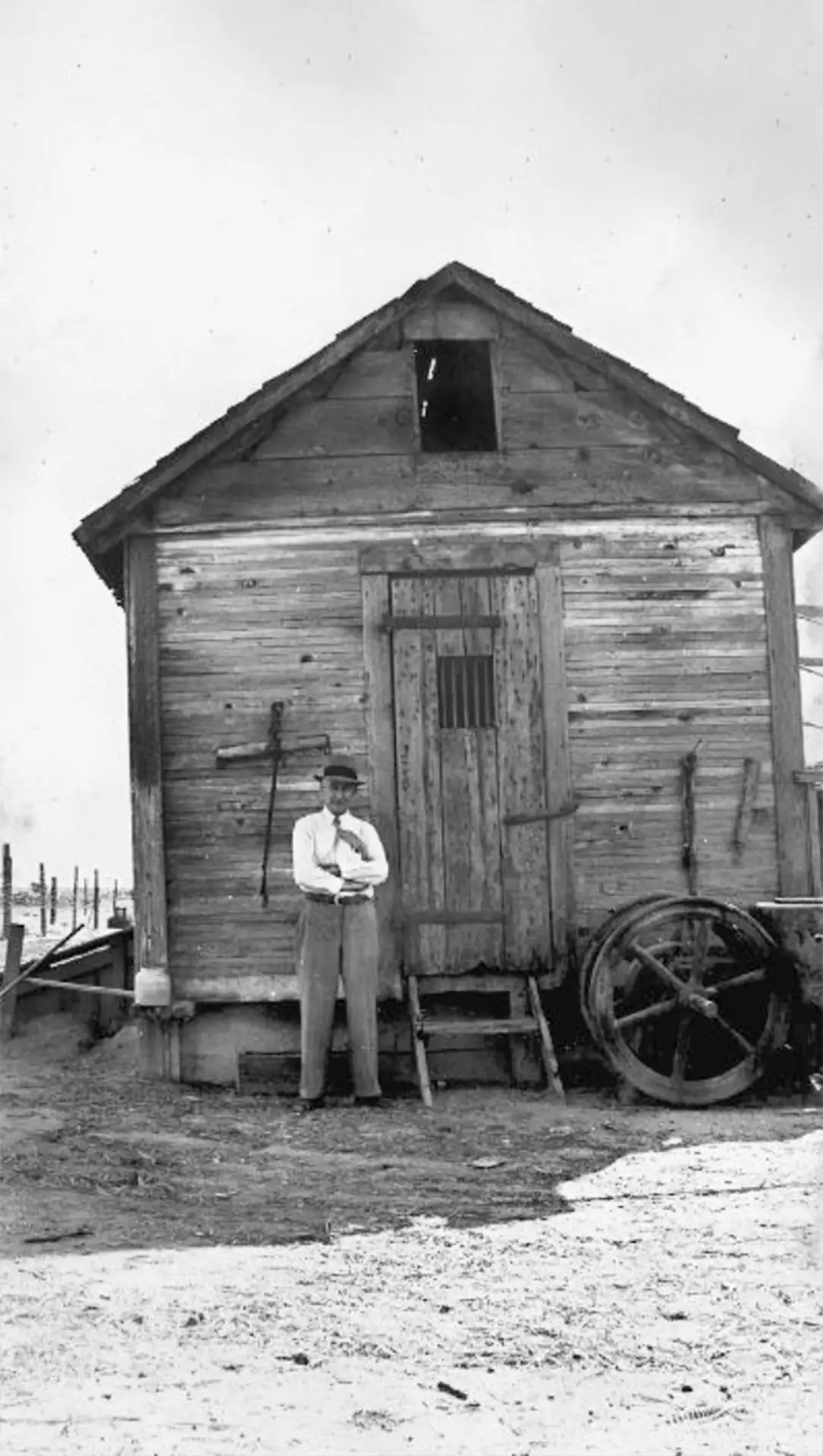In May of 1893, Madera County was carved out of Fresno County, and immediately the newspapers south of the San Joaquin River began a campaign of gloomy prognostications, the most serious of which was the prediction that lawlessness would reign supreme in the fledgling burg of Madera.
By the end of summer, however, it was the Maderans’ turn to crow. There had been no violent criminal activity anywhere in the county. In fact, the new sheriff, William H. Thurman, had very little to do during those first few months of the county’s existence. Then came September 1893, and Madera County had its very first murder case thrust upon it.
On the morning of September 13, one Belisario Valenzuela came running up Yosemite Avenue looking for Sheriff Thurman. Instead, he found Constable Green who, after considerable effort, managed to quiet the man down long enough to get the main pieces of his wild story.
Valenzuela had gone with a friend, Augustino Gillen, for breakfast at Ellen Ochoa’s Mexican restaurant not far from the corner of F Street (present-day Gateway Drive) and Yosemite Avenue. They had been seated for just a moment or two when the proprietor came out from a back room and beckoned for Gillen to join her. Together they disappeared, and ten minutes later Valenzuela heard a shot.
For a moment he froze, then he nervously peered into the back room. There he saw Ellen Ochoa emerging with a distraught look on her face. Not wishing to involve himself in what was obviously a violent domestic dispute, Valenzuela beat a hasty retreat in search of the law.
When Constable Green and Sheriff Thurman arrived on the scene, they found Augustino Gillen lying on the bed groaning and writhing in pain. He would only say that Ellen Ochoa had shot him. The lawmen sent for Dr. Butin who, upon examination, pronounced that the wound would no doubt be fatal. The victim was given a shot of morphine to ease his pain, but he steadfastly refused to give any details of the shooting other than to say that Ellen Ochoa had committed the act.
After her arrest, Ellen denied any knowledge of the shooting, but when a search of her trunk revealed a 32 caliber Smith & Wesson that had been recently fired, she broke down and told her side of the story.
According to the fifty-year-old Ochoa, she was Gillen’s mistress. She had been living with him at her restaurant for seven or eight months, and then trouble came to her Madera paradise, for on the night of September 12th, 1893, Gillen did not come home. When he finally strolled in for breakfast with Valenzuela the next morning, Ellen said he sauntered into the sleeping quarters of the restaurant to change clothes.
With her curiosity a little more than piqued, Ellen inquired as to her boyfriend’s whereabouts the night before, and he replied that it was none of her business. When she insisted on knowing, Gillen threatened her with bodily harm.
According to Ochoa, Gillen reached under the pillow and pulled out the pistol, but Ellen was too quick for him. Somehow, she maintained, she reached around him and made a grab for the gun, which accidentally went off, sending a bullet into Gillen’s abdomen.
With her estranged boyfriend disabled, Ellen said she took the remaining cartridges out of the gun and stashed it in the trunk. She then left the dying man on the bed and returned to the front of her restaurant where Valenzuela was waiting.
Nothing could be done for Augustino Gillen. By 1 that afternoon, he was dead. Sheriff Thurman locked Ellen Ochoa up in the tiny wooden affair that served as a county jail at the time, and presto, Madera County prepared for its first murder trial.
Ellen Ochoa’s testimony of self-defense was rejected by the jury and she was found guilty of second-degree murder. The twelve men agreed with the District Attorney that Gillen had died at the hands of an insanely jealous woman. Judge Conley gave her a ten-year prison sentence.
In the meantime, Fresno went to great lengths to point out what everyone had known all along. No community was immune to rash acts of violence, especially in the 19th century. Their newspaper headlines gleefully screamed the news: “First Case of Killing Yet Recorded in Madera County.” The young, upstart offspring could now enjoy the privilege of dealing with its own violence without any help south of the river.
It should not fail to be noticed, however, that Madera County and its first sheriff, William H. Thurman, were fully equal to the task of maintaining law and order in spite of the avuncular condescension from Fresno.
Originally published in the Madera Tribune




